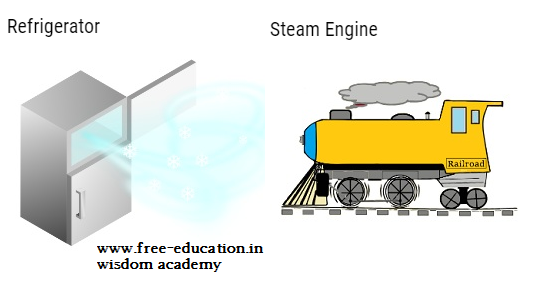About Lesson
Introduction
- Thermodynamics is that branch of physics which deals with concepts of heat and temperature and their relation to energy and work.
- We can also consider it as a macroscopic science which deals with bulk systems and tells us about system as a whole.
- In this chapter we will learn about the laws of thermodynamics which describes the system in terms of macroscopic variables, reversible and irreversible processes. Finally we will also learn on what principle heat engines, refrigerators and Carnot engine work.
Examples: – Refrigerator, steam engine

Thermodynamics vs. Mechanics
- In Thermodynamics we consider only the state of the object which means we will only consider macroscopic variables like pressure, volume and temperature.
- In mechanics we consider the motion, velocity and acceleration of the object.
For eg: –
- In mechanics if a bullet is fired from a gun we will consider the motion of bullet and its velocity, acceleration etc.

Thermal Equilibrium
- Two systems are said to be in thermal equilibrium if the temperatures of the two systems are equal.
- In mechanics if the net force on a system is zero, the system is in equilibrium.
- In Thermodynamics equilibrium means all the macroscopic variables (pressure, temperature and volume) don’t change with time. They are constant throughout.
For Example: –
- Consider two bodies at different temperatures one is at 300C and another at 600C then the heat will flow from body at higher temperature to the body at lower temperature.
- Heat will flow till both bodies acquire same temperature.
- This state when there is no heat flow between two bodies when they acquire the same temperature is known as thermal equilibrium.

Types of Equilibrium
Thermal Equilibrium: – Two systems are said to be in thermal equilibrium with each other if the temperatures of both the systems do not change with time.
Chemical Equilibrium: – Two systems are said to be in chemical equilibrium with each other if the composition of the system does not change over time.
Mechanical Equilibrium: – Two systems are said to be in mechanical equilibrium with each other if the pressure of the system doesn’t change with time.
A system is said to be in Thermodynamic equilibrium when all of its macroscopic variables are constant.
Join the conversation